 Your new post is loading...
 Your new post is loading...
The 2016 election exposed a significant crisis for U.S. democracy: the failure of our news media system.
This was an election in which false news was consumed as if true; in which polls were significantly off-base; in which journalists missed the stories both of Trump supporters, who came out in unanticipated numbers, and former Obama voters, who defied predictions to stay home.
The easy response, in the wake of these multiple failures, is to focus on one specific weakness. If only journalists had interviewed more white people in the Rust Belt! If only pollsters had looked at a different data-set! If only Facebook were not so dominant, or fake news sites so plentiful…
Such essays in search of simple answers represent no more than collective wishful thinking. Systemic failures have systemic causes. Repairs to the system may not be enough. We need to put time and resources now into transforming our news media system.
Why did we not know that voters in the Rust Belt were willing to vote for an anti-regulation racist populist, even when doing so might go against their values and self-interests? Likewise, why did news organizations fail to anticipate what appears to be a lower turnout of black voters in North Carolina (with its new voter suppression laws)?
It’s not that journalists in those communities were not doing their job; it’s that there are very few journalists left to tell the stories of those communities....
A relatively small group of publishers dominate Americans’ online news consumption, according to a new study by research outfit SimilarWeb, which compiled figures for the top news publishers covering both mobile and desktop audiences in 2015.
Overall, the top 10 publishers -- together owning around 60 news sites -- account for 47% of total online traffic to news content last year, with the next-biggest 140 publishers accounting for most of the other half, SimilarWeb found.The biggest online news publisher for the U.S. audience was MSN, owner of MSN.com, with just over 27 billion combined page views across mobile and desktop, followed by Disney Media Networks, owner of ESPN and ABC News, with 25.9 billion....
...If you’re applying a data-driven lens, as Jeff Sonderman highlighted at the Poynter Institute, you’ll need to ask a series of basic questions.“In every situation you face, there will be unique considerations about whether and how to publish a set of data,” he wrote. “Don’t assume data is inherently accurate, fair and objective. Don’t mistake your access to data or your right to publish it as a legitimate rationale for doing so. Think critically about the public good and potential harm, the context surrounding the data and its relevance to your other reporting. Then decide whether your data publishing is journalism.”...
How do you get your news? Personally, I get mine primarily from Facebook. As my job requires that I monitor and update different brands' pages, it's pretty likely that you'll find me with the Facebook tab open.... While I may be an addict—I mean hello, it is my job—I am not the only one who scours social networks for news. According to a Pew study, one third of adults under 30 access their news via social networks. 19% of all Americans got news from a social network like Facebook, Google+ or LinkedIn yesterday (up from 9% in 2010). This study was conducted in 2012. Being that we're now in 2013, I can only imagine it being a higher percentage to date....
Twitter is a frenemy," said Jeff Zucker, CNN's new president, as reported by MediaShift. Jeff Zucker was describing the cable news network's relationship with social media and added, “the network uses, relies on -- and is scared by -- social media.” Twitter had a marquee moment last week, particularly late Friday afternoon and evening, that should scare most television news outlets in the business of reporting breaking news. That’s when Boston Marathon bombing suspect Dzhokhar Tsarnaev was cornered by police, trapped and almost bleeding to death inside a covered boat in a backyard in Watertown, Mass....
Guardian digital development editor Joanna Geary answers some questions about GuardianWitness.... ...First up: this was built in two months. The sponsorship pot from EE gave them a budget and time to get the job done, but not necessarily have everything they wanted at launch. She says it's a complete, working system that can be built upon. I suggest the phrase "minimum viable product" to Jo but she suggests that it's a full product - one that will be built on. Do they have aspirations for more integration with social media? Yes, they do. And it's something they're looking at as the system develops. The key part of the development which is invisible to us right now is that the Guardian Witness system is deeply integrated with the Guardian's CMS. Once the content has passed through verification, it's available to the journalists, and they can insert it into a story or liveblog just by inserting an URL, which creates an embedded version of the contribution that links back to the contributor's profile. "The really exciting thing is not what you see now, but what you see when Witness is included in a story," she says. It's a tool to facilitate genuine collaborative working between the journalist and external witnesses. Jo says they'll collaborate with people on the ground, or with expert knowledge, in any way they can - and already do, via phone and other traditional methods. This adds another tool for doing that....
“Twitter does its best work in the first five minutes after a disaster, and its worst in the twelve hours after that.” - @rolldiggity There is a quiet that descends in a newsroom when a big story breaks.... Twitter has often been touted as the “first with news”. From the miniscule to the massive. From Stephen Fry being stuck in a lift, to the Arab Spring rippling across North Africa, it is the instant source of a story, the first gurgle from a tap. The only way to find out what’s really happening, according to some. But I’m beginning to think that so-called truth is losing some of its polish. I follow about 700 people on Twitter. I actually “watch” about three times that amount. I have lists of people I don’t follow. In other words, I can see them, without having to follow them. News people, experts, specialists, comedians, doctors, police officers, bloggers and bohemians. I’ve been on Twitter for more than three years. I like to think I’ve found much of the gold within its mines. When the first tweets about the Boston marathon explosions popped up in my timeline, I went over to my newsroom colleagues. I told them what was happening. And the process began. And I watched Twitter....
... News is irrelevant. Out of the approximately 10,000 news stories you have read in the last 12 months, name one that – because you consumed it – allowed you to make a better decision about a serious matter affecting your life, your career or your business. The point is: the consumption of news is irrelevant to you. But people find it very difficult to recognise what's relevant. It's much easier to recognise what's new. The relevant versus the new is the fundamental battle of the current age. Media organisations want you to believe that news offers you some sort of a competitive advantage. Many fall for that. We get anxious when we're cut off from the flow of news. In reality, news consumption is a competitive disadvantage. The less news you consume, the bigger the advantage you have....
As more consumers access news on their mobile devices, news organizations are seeing traffic to their websites from desktop computers flatten or decline. And in some regions, such as many parts of Africa, users are leapfrogging the Web altogether and going straight to mobile. Although many newsroom leaders believe a "mobile, too" approach -- a focus on mobile in addition to other platforms -- will be enough, that mentality is shortsighted, Bergman said in a recent Poynter Online chat. Joining Bergman to discuss the news industry's transition to mobile were Poynter's Regina McCombs and Damon Kiesow, senior product manager for mobile at the Boston Globe and Boston.com. The chat included several helpful tips for newsrooms making the transition to mobile....
...Ad-supported journalism is being consumed in record quantities, but those of us who manage media companies face a stark reality: Traditional advertising dollars in print and broadcast become dimes on the full-scale web, and they tend to disappear entirely on mobile devices. Alternative revenue models, then, are key to success, but only if they follow ethics guidelines that protect media outlets from losing credibility with readers. Sponsored content, as it is now being published on the full-scale and mobile web, differs from old-fashioned print advertorial in significant ways. The biggest departure is that, rather than passively receiving and publishing advertorial copy from ad agencies, media outlets are more often partnering with brands to create custom-content “native advertising” campaigns that resonate with readers who fit the publication’s demographic profile. BuzzFeed, for instance, employs a large staff to craft brand-marketing pieces that readers will share with friends via Facebook and other social networks. One such recent post, “11 Things No One Wants To See You Instagram,” quickly drew 330,000 views on behalf of advertiser Virgin Mobile, the Wall Street Journal reported. Similarly, Forbes Media created a Forbes BrandVoice program through which brands can submit paid articles to the Forbes website. “The advertiser-sponsored copy appears in the same style and format as articles contributed by Forbes writers and editors,” New York Post media columnist Keith J. Kelly reported in November. (The BrandVoice connection is noted at the top of posts.) This is a Wild West moment for sponsored content...
The immersive multimedia documentary, built using Zeega, tells the story of the impact of oil drilling in North Dakota. Todd Melby wants to tell small stories. Hardly an impossible goal for a journalist, but when you’re looking at something as big as the explosion in oil drilling in North Dakota, the scale of the story can get out of hand. In less than five years, the state has tripled its oil production; the Census Bureau estimates western North Dakota (where the oil is) will see its population increase by 50 percent. Big story. So Melby decided to to tell the macro story in a micro way, focusing on the roughnecks who come to North Dakota in search of jobs, the daily experience of working on an drilling rig, and the families whose lives are upended by the oil patch. The result is Rough Ride, a multimedia experience that takes an intimate, documentary-esque approach to telling the story. Split into a series of chapters, Rough Ride divides up the various players and scenes found throughout North Dakota’s rapidly expanding oil country, intertwined with interactive graphics, photography, and first-person video. (It’s not something easy to embed in an article like this; you really do need to go to the site and let it play to get the experience. Go full screen if you can. It’s immersive in a way that a 600-pixel-wide frame can’t be.)...
"The new muckraking isn't the effect of new media alone...Yet buried within the infrastructures of communicative abundance are technical features that enable muckrakers to do their work of publicly scrutinising power, much more efficiently and effectively... Who or what drives the new muckraking? The temptations and abuses of power by oligarchs, certainly. The criminal obscenities, hypocrisies and political stupidities of those responsible for the deep crisis of parliamentary democracy in Greece and the wider Atlantic region, no doubt. The decline of parties and representative politics and strengthening democratic sensibilities against arbitrary power also play their part. But of critical importance is the advent of communicative abundance. Just as the old muckrakers took advantage of advertising-driven mass production and circulation of newspapers, so the new muckrakers are learning fast how to use digital networks for political ends....
I’ll be the bearer of bad news: the press that most publicists chase for clients isn’t really worth anything. There’s a good chance no one will actually see it. Except the client, that is. The flack will make damn sure of that. But other than that, the assumptions of publicists, clients and journalists—that being featured matters, that being written about will drive awareness or sales or public image—are a collective chimera. The widespread belief is that the media has “reach.” Trust me, they don’t. Not anymore. It’s become almost pathetic. It hit me the other day when I snagged a profile for a client on a well-known website. The day it ran, they editor sent me an email: “Hey, we hate to ask but could you guys be sure to tweet and share the article for us?”... [This is a fascinating article and media irony ~ Jeff]
|
A majority of U.S. adults – 62% – get news on social media, and 18% do so often, according to a new survey by Pew Research Center, conducted in association with the John S. and James L. Knight Foundation. In 2012, based on a slightly different question, 49% of U.S. adults reported seeing news on social media.1
But which social media sites have the largest portion of users getting news there? How many get news on multiple social media sites? And to what degree are these news consumers seeking online news out versus happening upon it while doing other things?
As part of an ongoing examination of social media and news, Pew Research Center analyzed the scope and characteristics of social media news consumers across nine social networking sites. This study is based on a survey conducted Jan. 12-Feb. 8, 2016, with 4,654 members of Pew Research Center’s American Trends Panel.
News plays a varying role across the social networking sites studied.2 Two-thirds of Facebook users (66%) get news on the site, nearly six-in-ten Twitter users (59%) get news on Twitter, and seven-in-ten Reddit users get news on that platform. On Tumblr, the figure sits at 31%, while for the other five social networking sites it is true of only about one-fifth or less of their user bases....
Instead, it’s perhaps a warning to anyone taking VC. You’d better expect if you’re taking all that money, you have a plan so the VCs get a pay-off. Are you going to generate those millions invested and more so? Or do you really think someone’s going to buy you for absurd multiples based on potential value? If so, maybe the VC money makes sense. But just because some publications go that route, not all need to.
Let me conclude by saying again how sad I am to see GigaOm end so suddenly. I hope the journalists there quickly find new places to write, as I’m sure they will. I also debated writing anything about this at all, when the loss of GigaOm remains so personal to so many and is still being digested. But seeing others writing about what it all means in the grand scheme of publishing, I thought another perspective might be useful.
Steve Hind: When readers are lured in and rewarded for their curiosity with good content, everyone wins. Sites like Buzzfeed use this to their advantage, and traditional media should take note..
.Last week the internet was treated to another great offering from Randall Munroe, author of the xkcd cartoon blog.
In it, Munroe re-imagined 20th century headlines if they were written to get more clicks. "This one weird mould kills all germs" could have applied to the discovery of penicillin in 1928. "You won't believe what these people did to the Berlin Wall" could have appeared in November 1989 for maximum effect.
His point, of course, was that the "clickbait-ification" of our news is cheapening it....
BuzzFeed gets free content, users get exposure, we get 11 Engagement Photos That Will Make You Happy You’re Single. ... The department devoted to creating this “old school” content is known as BuzzTeam. Their focus is anything shareable — lists, animals, nostalgia. The kind of content that BuzzFeed’s loyal readers have become hyper-familiar with. Many, in fact, have consumed so many such BuzzFeed posts that they’ve become adept at mimicking both their tone and their viral success. Earlier this month, BuzzFeed’s editors took a step toward giving those faithful followers a little more of the spotlight they crave. Shepherd, along with a staff of four, now run BuzzFeed Community, a content-producing vertical of its very own, complete with featured posts by community members and a leaderboard with the latest on who’s posts are getting the most traffic, likes, comments, and badges. It’s a competitive place, and anyone can join and enter the fray....
Yesterday I quoted my old boss at the New Statesman. Today it’s Jon Snow, Channel 4 News presenter and Charlie Beckett who now runs Polis at the London School of Economics and was previously a programme editor at Channel 4 News. Both had interesting things to say about the evolution of news in the networked age. Both were talking heads in the final part of Steve Richards’ Making News series on Radio 4....
Today’s annual report on the State of the News Media shows that new technologies really are pressing journalists to do much more with much less. Last week, we learned that newspaper industry ad revenue was down 7.3 percent this year to its lowest level since 1984 (or 1954, adjusted for inflation). As a result, newsrooms continue to shrink. But The Project For Excellence in Journalism’s report shows us that the needs and demands of the audience are growing and fragmenting. Social media is an important source of news, the report says, but remains smaller and only “supplemental” to other discovery methods like directly visiting a news website, searching the Web or browsing an aggregator....
TV and social media coverage of Boston bombings was repetitive and speculative. The story will unfold in coming days.... The Steve Silva boston.com footage of the Boston marathon finish line explosion is the new World Trade Tower plane implosion is the new Zapruder tape. Another national horror leaves a scar. We know the drill: The moment of violent disruption, the sense of shock oddly mediated by the screen, replayed endlessly — now on every platform. The repeated images become mere images, first shocking then numbing. At some point, perhaps to distance ourselves from the pain, we focus on the conflicting reports of the smallest detail: how many seconds elapsed between the first explosion and the second? First we heard “a few.” Then a more definitive “13 seconds.” Then “between 10 and 20.” Every network had a different count. At some point we started counting ourselves, timing the moments with every replay. Could’ve been 13, but the speed of sound is faster than the speed of video, isn’t it? We were told that cell service was disrupted so as not to set off additional bombs. That report was then retracted. We heard the JFK Library had a third bomb. That report later knocked down. A suspect was held at Brigham and Women’s Hospital. Authorities later said not so. More unexploded bombs? Maybe, maybe not. Information moves faster than knowledge and still the finish-line explosion footage rolls....
Or, put another way still, the paywall, other than providing a bit more time to wrestle with the underlining problems of newspapers, does not solve any of them. Even with this new class of free-spending readers, the economic problems remain exactly the same: • An extraordinary indifference, if not utter lack of interest, on the part of younger people to news brands and to news habits, a development that established news organizations have been unable to address, stall, or even fathom. • Dramatic abandonment of the medium by traditional advertisers, such that, since 2007, newspapers, according to industry monitor group Outsell, have seen more than a 40% decline in overall income, the overwhelming amount of that drop due to lost ad revenues....
"Internet Users Demand Less Interactivity," read the headline of a recent article at The Onion. A (fictional) Internet user commented: "Every time I type a web address into my browser, I don't need to be taken to a fully immersive, cross-platform, interactive viewing experience...I don't want to take a moment to provide my feedback, open a free account, become part of a growing online community, or see what related links are available at various content partners." Are magazine app users starting to feel the same way? Faced with floods of online content, readers open magazine apps for a cohesive, relaxed reading experience -- only to cope with massive file downloads and confusing, complex interfaces.
A new batch of magazine publishers wants to move in a different direction. Drawing on the concept of "subcompact publishing," recently articulated by Craig Mod, and often mentioning Marco Arment's The Magazine as inspiration, these publishers are creating minimalist magazine apps that do just enough -- and no more -- to provide a focused, deep, quality reading experience....
When a helicopter crashed in a densely populated part of London around 8am today, next to one of the busiest trainlines in Europe and a large bus station, the news was always going to be broken, within seconds, by members of the public on Twitter, armed with camera phones.
Twitter user Craig Jenner was one of the first to put a picture on Twitter which was shared far and wide.
What happened next is indicative of the way the media are increasingly playing catch-up on such stories, moving from reporting to aggregating (or curating, if you must) - images, eye-witness accounts and videos. Journalists were asking to use the picture with a credit and were trying to get Jenner on the phone...
The arrival of the web knocked the news industry's relationships — with advertisers and with readers — out of alignment. But there are signs a few small repairs are working.... Misalignment grew, with readers and advertisers, as both themselves went increasingly digital. Think about it. In the old print world, advertisers paid up but really got a huge — and effective — audience, which moved goods and services. In this new digital world, they could buy online display that has never approached the results of print. Clickthrough rates tumbled toward the miniscule, tangible evidence of the growing disconnection. Shoppers found little usefulness in the advertising. Online advertising may have brought in a few billions, but publishers came nowhere close to creating the kind of local marketplace the newspaper had created. Cultural misalignment. Reader misalignment. Merchant misalignment. Shopper misalignment....
I have this wall monitor across from my desk that updates the top headlines on Forbes.com every five seconds. I often race up a spiral staircase to the newsroom to congratulate a staff reporter whose post has soared to No.1 To me, it means our journalism has hit home. Then I walk over to our producer desk. They know what I’m going to say: “Make sure you add a gallery to that post — consumers love photos and they drive ad impressions, too.” Next, I’ll peek at four terminals used by a member of our ad sales team — yes, she sits in the newsroom. It’s her job, among many, to optimize advertising campaigns with relevant and spiking content. Everyone in our new newsroom appreciates the imperative to make our premium news product pay off for both the audience and our marketing partners. The business of journalism is changing, requiring every editor and reporter to think and act differently.... [Lewis DVorkin provides a fascinating look inside Forbes. This post is a must-read and should be required reading for all traditional news media executives and journalists too. ~ Jeff]
|



 Your new post is loading...
Your new post is loading...



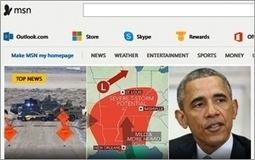






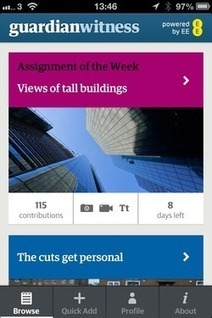




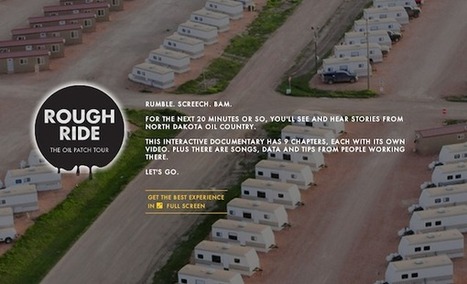

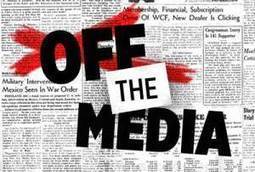





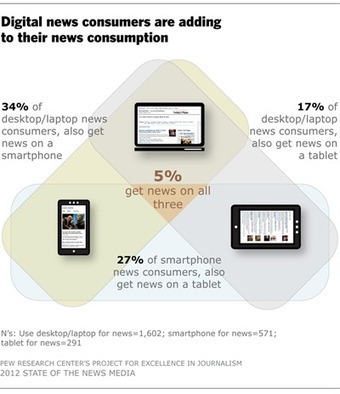

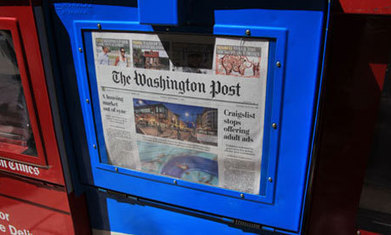










I'm just not convinced that more journalists would solve the problem. The problem is systemic – we don't need journalists when we have direct access through social media and everyone is an expert, a spokesperson, a performer, an influencer and most definitely a surrogate.
We do need to rethink media for the future. CNN for example, is right back to its talking heads and experts and pundits formula and presentation. While it was compelling during the election, it's already wearing out while its reporters and roundtables of surrogates and "experts" flail around trying to figure out how to bring us news that matters.where much of the poor for it as Jo Ellen Green Kaiser says in this excellent post.